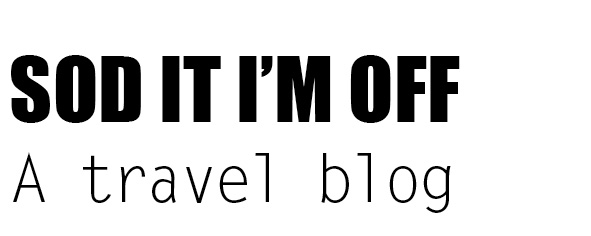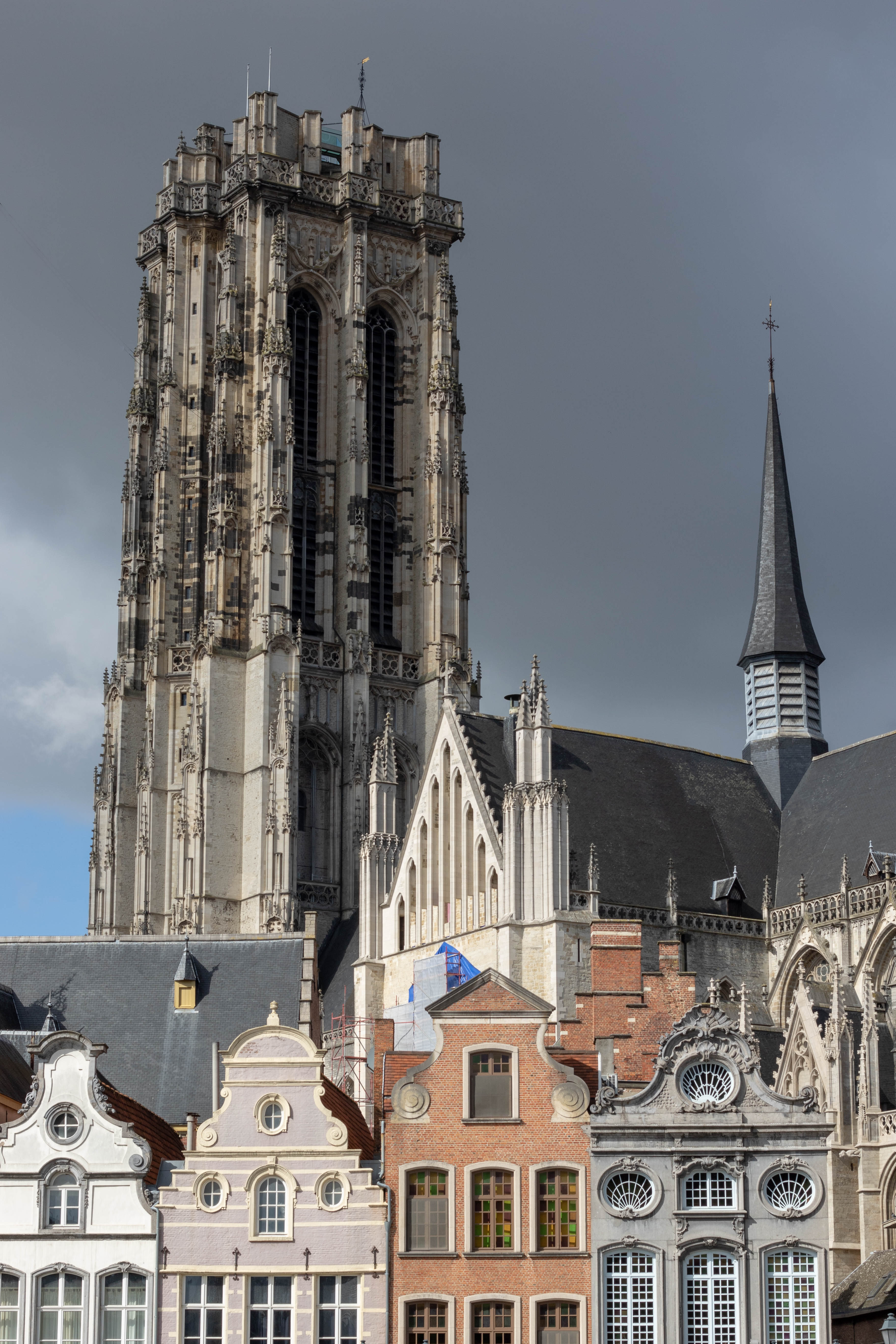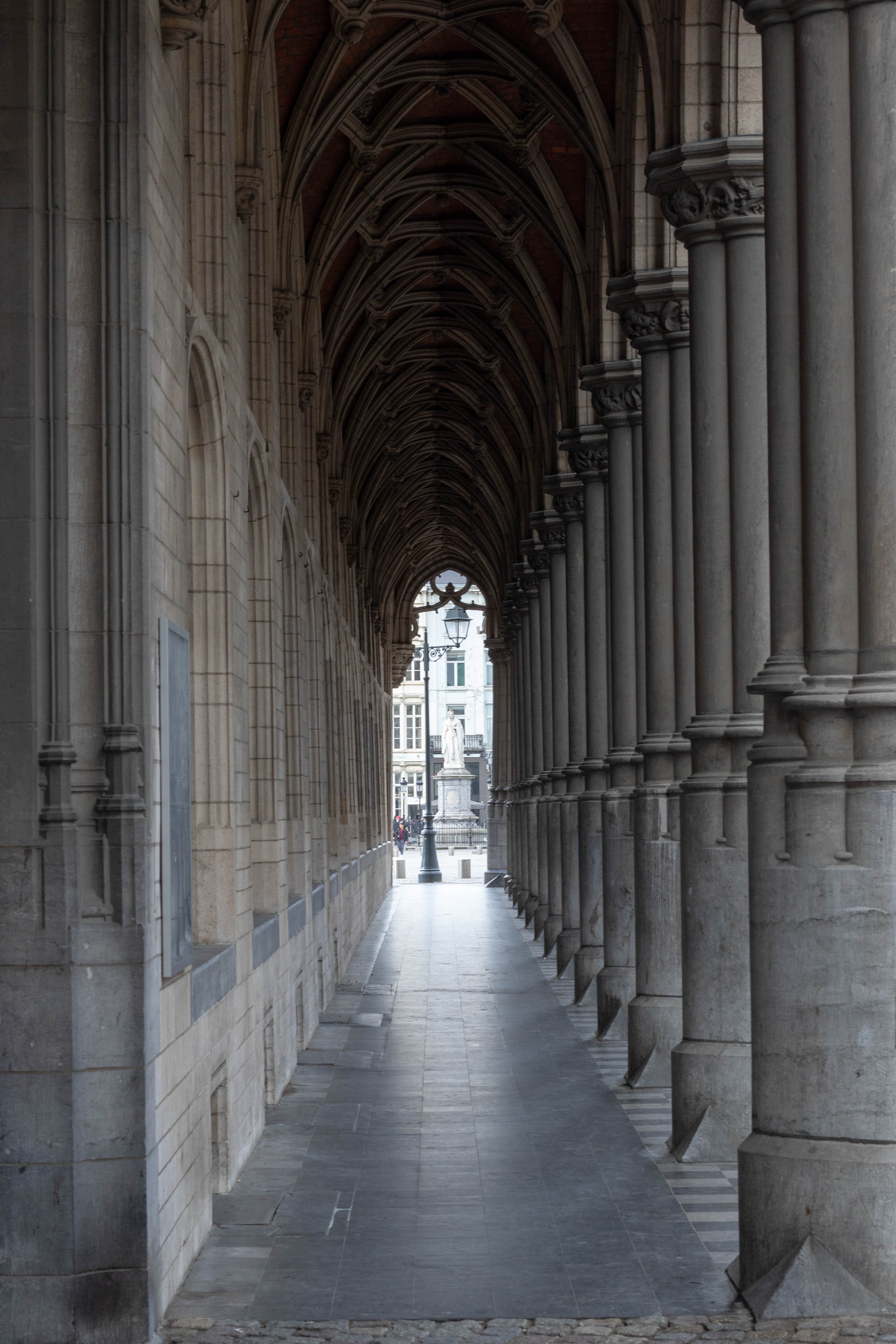BELGIUM 2019
ANTWERP
A speaking gig provides a good chance to explore Belgium in a bit more detail. We take the Eurostar to Brussels and then the train to Antwerp. A five-minute cab ride takes us to the Hotel Pilar. It’s pouring rain, so we step across the road to Da Vinci on Verschansingstraat for a decent Italian. The next day the weather has improved, so we stroll up Kloosterstrat to the town centre, stopping to buy a mask from Nepal on the way. Groenplaats and Grote Markt are the main squares – open and airy like Prague or Krakow. It’s all very picturesque.
The Katedral is a fantastic cathedral, and clearly has very enterprising management. Parts of it are turned over to art. One sculpture in bronze shows a man balancing a cross on his hands. This piece by Jan Fabre is stunning. Another large selection in bronze shows a thought-provoking series of beds occupied by the homeless. There are no bodies – just the beds and possessions, punctuated in white and blue. Along with various works by Rubens, and a massive wooden carved pulpit, this is really worth a look. We take a well-earned beer in the Café Pelikaan on Melkmarkt, which is full of artisans and old local characters.
Then down to the Rubenshuis, home of the famous artist, which is full of interesting curios, but could have been even better if the courtyard wasn’t full of scaffolding, as is much of Belgium by the look of it. A late lunch at Rooden Heed comes highly recommended – steak or seafood stacked high.
The next day we strike out up the windy and wide Schelde River to Het Steen, but the castle on the shore is another victim of renovation, so there’s nothing to see. St. Paul’s Church nearby is in full swing with Sunday Mass. And then on to the fantastic modern art museum, housed in a building that looks like a pile of tessellated red bricks dumped in the water and propped up by corrugated glass cylinders. As always with such places, there is plenty of weird stuff inside, but also superb pre-Colombian gold and a life and death exhibition featuring one of our favourite topics – ethnic masks.
MECHELEN
Then it’s off to Mechelen, a 20-minute train ride back towards Brussels. This is a small place, so it’s five minutes to the Martins Patershof, a church converted into a hotel. If you pay enough, you can wake up to stained glass light flowing into your room. It’s a pleasure to walk around such a small place. Tight canals give way to a couple of breweries, a religious area originally set up by the beguines, an ancient set of Flemish nuns. We then move to Kazerne Dossin. This was formerly a barracks, and chillingly a staging post for sending jews and roma to Auschwitz-Birkenhau. This completes a picture for us, linking Auschwitz to the Warsaw camps, and the Nazi pogrom whose evidence we have seen throughout Europe. Chilling stuff, and once again good to see over 100 schoolchildren learning their history.
Suitably solemn, we head back into the centre of town to climb the impressive St. Rumbold’s Tower. This is 500 steps, 300 feet, no lift, and with a superb panorama at the top. On the way, you can observe the mind boggling trap doors through which enormous bronze bells are lifted, an organ-like contraption that plays all the bells, and a fascinating barrel drum system that makes the clock play a range of tunes on time. On a sunny day, strolling down the River Dijle and ending up at a charming pub is a delightful thing to do.
For a quick break, Mechelen and Antwerp are more pleasurable than the sprawling Brussels, and more authentic than the chocolate box perfect Bruges. 8 out of 10 overall, with full marks for the Katedral in Antwerp, and the Kazerne Dossin in Mechelen, if you can take holocaust memorabilia.








Leave A Comment